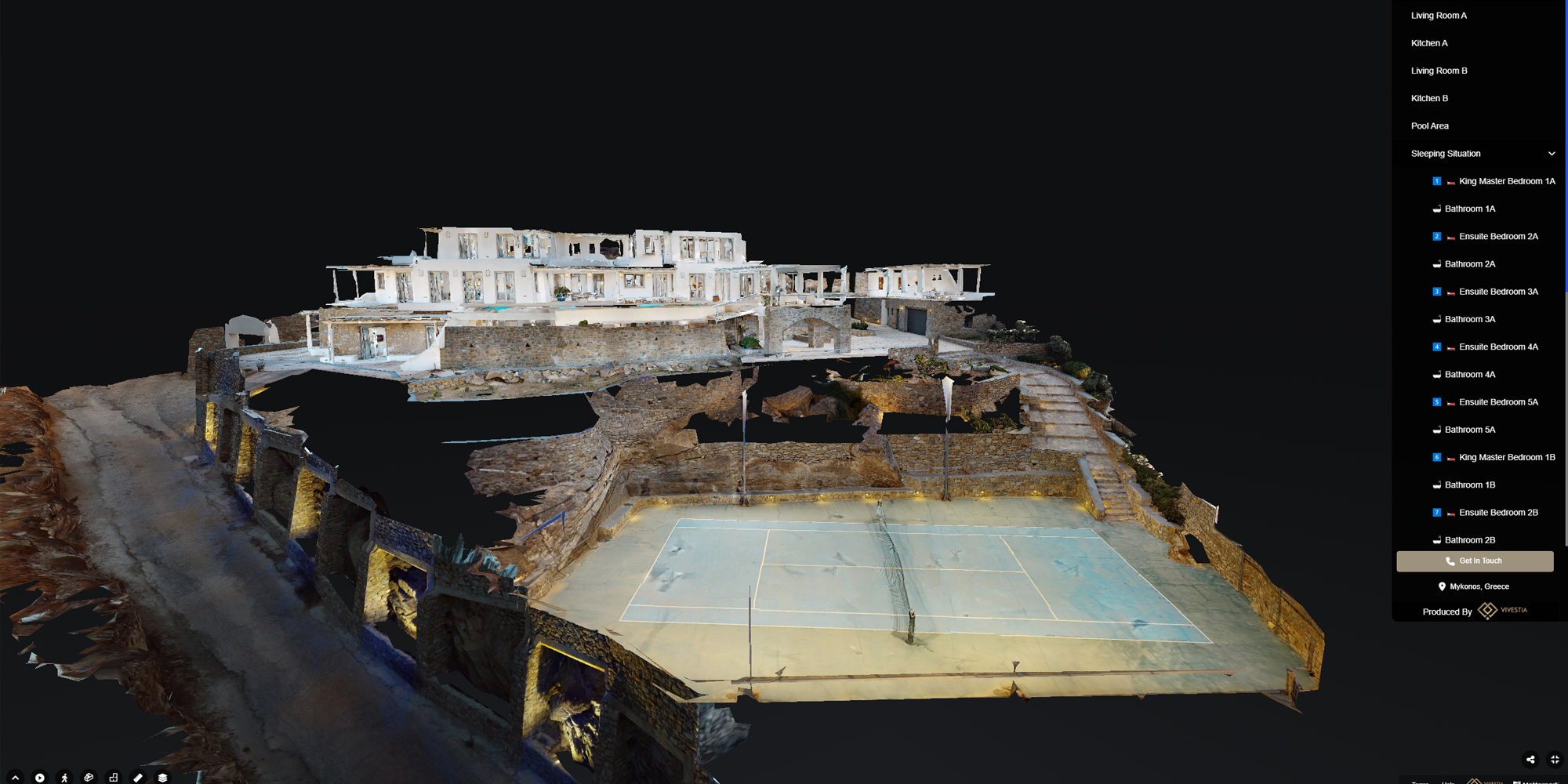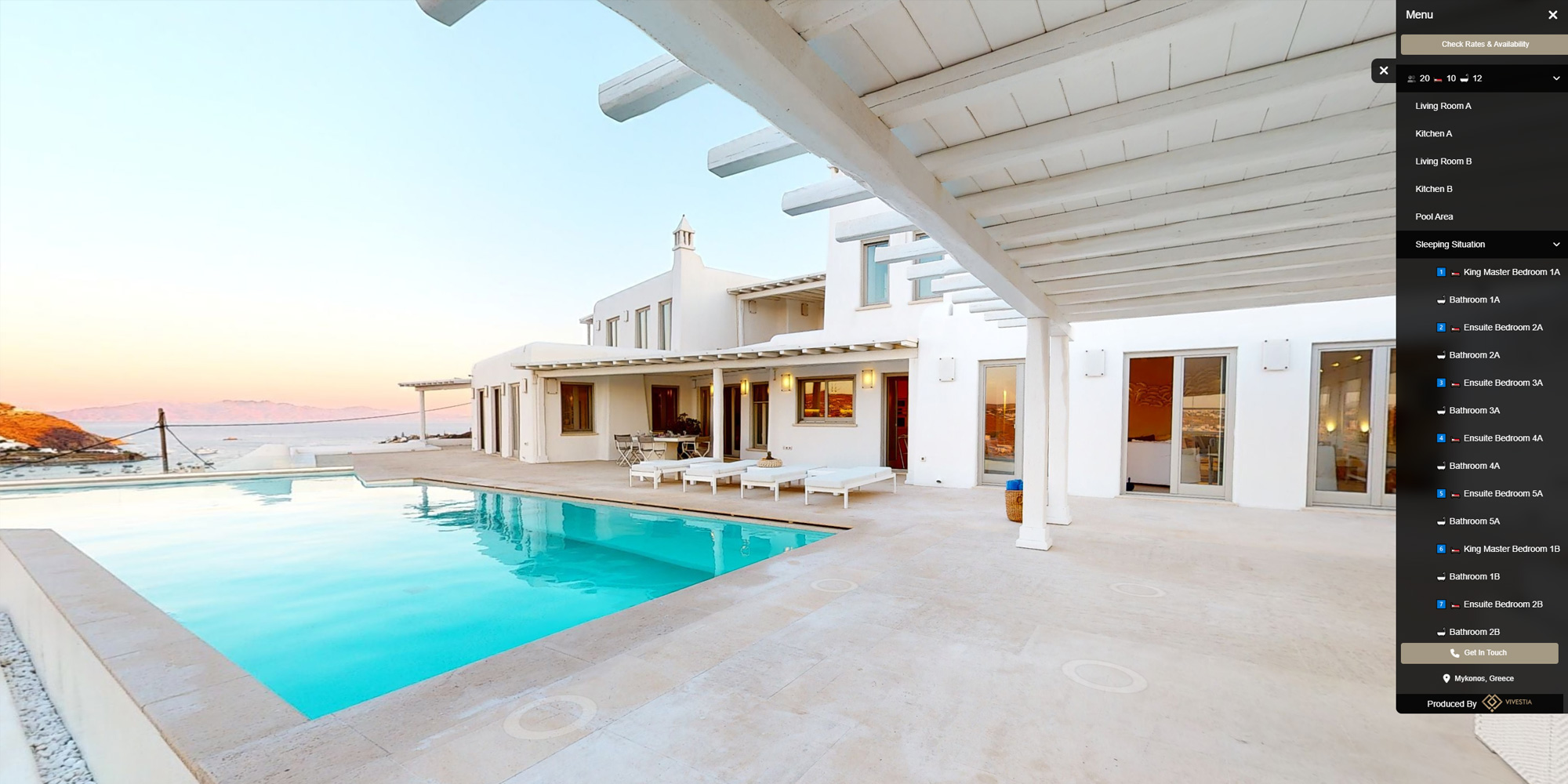Last Updated on 18/09/2023 by Manolis Maragkoudakis
Unleashing The Potential Of 3D Virtual Tours

3D Virtual Tours
Step into a whole new world with 3D virtual tours! Gone are the days of simply browsing through pictures and imagining what a space might look like. With the advent of 3D virtual tours, you can now immerse yourself in a realistic and interactive experience that feels almost like being there in person. Whether you’re exploring a potential new home, planning a vacation, or virtually visiting a museum, these tours offer a myriad of benefits.
In this article, we will delve into the advantages of 3D virtual tours and how they are revolutionizing the way we experience various spaces. We will explore how these tours provide a realistic visualization of the area, allowing you to navigate and examine every nook and cranny. Beyond the visual aspect, we will discuss how these tours enhance engagement and help you make more informed decisions. From the convenience of exploring properties remotely to the time saved in physically visiting multiple locations, 3D virtual tours have truly transformed the way we browse and experience spaces.
Join us as we embark on a journey through the world of 3D virtual tours and discover the endless possibilities they offer. Get ready to immerse yourself like never before!
The Rise of 3D Virtual Tours in Various Industries
The use of 3D virtual tours has gained significant traction across a wide range of industries. Real estate, hospitality, tourism, and even education have all embraced this technology to provide a more immersive experience for their customers. In the real estate industry, 3D virtual tours have become an essential tool for property listings.
Instead of relying solely on static images, potential buyers can now explore every room and space within a property, giving them a realistic sense of the layout and design. This technology has proven to be a game-changer, especially for remote buyers who may not have the opportunity to physically visit the property.
Similarly, the hospitality and tourism sectors have also adopted 3D virtual tours to showcase their accommodations and attractions. Hotels, resorts, and vacation rentals can give potential guests a virtual walkthrough of their facilities, including rooms, amenities, and common areas. This not only provides a more accurate representation of the property but also helps guests make more informed decisions when booking their stay.
Museums and art galleries have also jumped on the bandwagon, offering virtual tours that allow visitors to explore their collections from the comfort of their own homes. This opens up a world of possibilities for individuals who may not have the means or ability to visit these cultural institutions in person.
The rise of 3D virtual tours in these industries is a testament to the growing demand for more immersive and interactive experiences. As technology continues to advance, we can expect even more sectors to embrace this trend and find creative ways to engage their audience through virtual tours.
Benefits of Using 3D Virtual Tours for Businesses
The benefits of using 3D virtual tours for businesses are plentiful. For starters, these tours offer a realistic visualization of a space, allowing potential customers to explore and examine every detail. Unlike traditional photographs or videos, which only provide a limited perspective, 3D virtual tours give users the freedom to navigate the space at their own pace. They can zoom in on specific areas, rotate the view, and even switch between different rooms or sections. This level of control and interactivity creates a sense of ownership and allows users to truly envision themselves in the space.
Furthermore, 3D virtual tours can significantly enhance the customer experience. By providing an immersive and engaging platform, businesses can captivate their audience and leave a lasting impression. Whether it’s a hotel showcasing its luxurious suites, a museum displaying its priceless artifacts, or a retailer highlighting its merchandise, a well-executed virtual tour can evoke emotions and generate excitement. This emotional connection can be a powerful tool in influencing purchasing decisions and building brand loyalty.
In addition to enhancing the customer experience, 3D virtual tours can also increase conversions for businesses. By providing a more comprehensive and transparent view of a product or service, businesses can instill trust and confidence in potential customers. For example, a real estate agent who includes a 3D virtual tour in their property listings may attract more serious buyers who have already had the opportunity to explore the space remotely. This can lead to a higher likelihood of closing deals and reducing the time and effort spent on unnecessary property visits.
Enhancing the Customer Experience through 3D Virtual Tours
One of the key benefits of 3D virtual tours is the ability to enhance the customer experience. By immersing customers in a virtual environment, businesses can create a memorable and engaging interaction that sets them apart from their competitors. Whether it’s a hotel, a restaurant, or a retail store, a well-designed virtual tour can transport customers to the actual physical space, allowing them to explore and interact with the environment as if they were there in person.
For hotels and resorts, 3D virtual tours can showcase the various amenities, room types, and common areas, providing potential guests with a comprehensive view of the property. Users can navigate through the lobby, explore the swimming pool, and even step into different room categories, all from the comfort of their own homes. This level of interactivity not only helps guests make more informed decisions but also creates a sense of excitement and anticipation for their upcoming stay.
Restaurants can also leverage 3D virtual tours to give customers a sneak peek into their dining experience. Users can virtually walk through the restaurant, explore the interior design, and even take a close look at the menu and table settings. This not only allows customers to get a feel for the ambiance but also helps them visualize themselves enjoying a meal at the establishment. By providing this immersive experience, restaurants can entice customers and increase the likelihood of reservations and repeat visits.
Retail stores can benefit from 3D virtual tours by showcasing their merchandise in an interactive and visually appealing way. Customers can virtually browse through the different sections, zoom in on products, and even click on specific items for more information.
This level of engagement can replicate the in-store shopping experience and provide customers with a sense of confidence and satisfaction in their purchase decisions. Additionally, virtual tours can help businesses stand out in the crowded online marketplace, as they offer a unique and memorable shopping experience that goes beyond static images and descriptions.
Overall, 3D virtual tours have the power to transform the customer experience by providing a more immersive and interactive platform. By leveraging this technology, businesses can create a lasting impression, increase engagement, and ultimately drive conversions.
Increasing engagement and conversions with 3D virtual tours
3D virtual tours have revolutionized the way businesses engage with their customers. In today’s digital age, where attention spans are shorter than ever, it is crucial for businesses to find innovative ways to capture and hold their audience’s attention. Traditional static images and videos are no longer enough. Customers want to feel like they are part of the experience, and that’s where 3D virtual tours come in.
One of the key benefits of 3D virtual tours is the increased engagement they provide. By allowing customers to explore a space in a fully immersive and interactive manner, businesses can create a more memorable and impactful experience.
Instead of simply looking at pictures, customers can now walk through a property, examine details up close, and get a true sense of the space. This level of engagement not only keeps customers on a website for longer, but it also increases the chances of them taking the desired action, whether that’s making a purchase, booking a reservation, or scheduling a showing.
Another advantage of 3D virtual tours is their ability to boost conversions. When customers can fully visualize a space and understand its layout, they are more likely to feel confident in their decision-making process. This increased confidence translates into higher conversion rates.
For example, in the real estate industry, studies have shown that properties with 3D virtual tours receive more inquiries and sell faster than those without. The immersive nature of these tours allows potential buyers to imagine themselves living in the space and visualize how it would fit their lifestyle. This emotional connection is a powerful tool for driving conversions.
In addition to engagement and conversions, 3D virtual tours also offer businesses the opportunity to provide a more transparent and trustworthy experience. By allowing customers to explore a space on their own terms, businesses can build trust and credibility. Customers appreciate being able to see every angle of a property or product, without any hidden surprises. This transparency can help businesses establish a positive reputation and differentiate themselves from competitors.
Overall, the ability of 3D virtual tours to increase engagement, boost conversions, and provide a transparent experience makes them a valuable tool for businesses in various industries. Whether you’re a real estate agent, a hotel owner, a restaurant manager, or a museum curator, incorporating 3D virtual tours into your marketing strategy can take your business to the next level.
How to create a 3D virtual tour for your business
Creating a 3D virtual tour may seem like a complex and daunting task, but with the right tools and resources, it can be a relatively straightforward process. Here are the key steps to follow when creating a 3D virtual tour for your business:
Choose the right equipment: To capture a space in 3D, you’ll need a 360-degree camera or a smartphone with a compatible app. There are many options available on the market, so do some research and choose the one that best fits your needs and budget.
Plan your shoot: Before you start capturing the space, take some time to plan your shoot. Think about the key areas you want to highlight, the angles you want to capture, and any specific details you want to showcase. It’s important to have a clear vision of what you want to achieve before you begin.
Capture the space: Once you’re ready to start shooting, make sure the space is clean and well-lit. Begin by capturing the main areas and then move on to the smaller details. Take your time and make sure you capture every angle to provide a comprehensive experience for your audience.
Stitch the images together: After capturing the space, you’ll need to use specialized software to stitch the images together and create a 3D virtual tour. There are many software options available, ranging from free to paid, so choose the one that best suits your needs and technical abilities.
Add interactive elements: To enhance the user experience, consider adding interactive elements to your virtual tour. This could include hotspots that provide additional information or links to related products or services. The more interactive and engaging your tour is, the more likely your audience will be to stay engaged and take the desired action.
Publish and share: Once your virtual tour is complete, it’s time to publish and share it with your audience. Embed the tour on your website, share it on social media, and consider reaching out to relevant industry platforms or publications to showcase your work. The more exposure your tour receives, the greater the impact it will have on your business.
Creating a 3D virtual tour may require some initial investment in terms of equipment and software, but the long-term benefits far outweigh the costs. By providing an immersive and interactive experience, you can engage your audience, boost conversions, and differentiate yourself from competitors.
The future of 3D virtual tours
As technology continues to advance, the future of 3D virtual tours looks promising. Here are some trends and developments to keep an eye on:
Virtual reality integration: Virtual reality (VR) is becoming increasingly popular, and it’s only a matter of time before it becomes an integral part of 3D virtual tours. VR headsets will allow users to fully immerse themselves in a tour, providing an even more realistic and engaging experience.
Mobile optimization: With the majority of internet users accessing content on their mobile devices, optimizing 3D virtual tours for mobile platforms is crucial. As technology improves, we can expect to see more seamless and user-friendly mobile experiences.
Enhanced interactivity: The level of interactivity in 3D virtual tours will continue to evolve. From personalized recommendations based on user preferences to real-time communication with tour guides or sales representatives, the possibilities for enhancing interactivity are endless.
Integration with e-commerce: As online shopping continues to grow, integrating 3D virtual tours with e-commerce platforms will become essential. Customers will be able to explore products in a 3D environment, try them on virtually, and make purchases directly from within the tour.
Expanded applications: While 3D virtual tours are already widely used in real estate and tourism, we can expect to see their applications expand to other industries. From virtual showrooms for retail stores to virtual training environments for educational institutions, the potential for 3D virtual tours is limitless.
The future of 3D virtual tours is exciting, and businesses that embrace this technology early on will have a competitive advantage. By staying up to date with the latest trends and developments, you can continue to leverage the power of 3D virtual tours to engage your audience and drive business growth.
Embracing the power of 3D virtual tours for your business
From increasing engagement and conversions to providing a transparent and immersive experience, 3D virtual tours offer numerous benefits for businesses. By allowing customers to explore a space in a realistic and interactive manner, businesses can create a more memorable and impactful experience. With the right equipment and software, creating a 3D virtual tour is within reach for businesses of all sizes.
As technology continues to advance, the future of 3D virtual tours looks promising. From virtual reality integration to enhanced interactivity and expanded applications, the possibilities for this technology are endless. By embracing 3D virtual tours early on and staying up to date with the latest trends, businesses can position themselves as industry leaders and provide a unique and engaging experience for their customers.
So, what are you waiting for? It’s time to step into the world of 3D virtual tours and unlock the full potential of your business. Whether you’re a real estate agent, a hotel owner, or a museum curator, incorporating 3D virtual tours into your marketing strategy can take your business to new heights. Embrace the power of 3D virtual tours and watch your engagement, conversions, and customer satisfaction soar.






Post Discussion